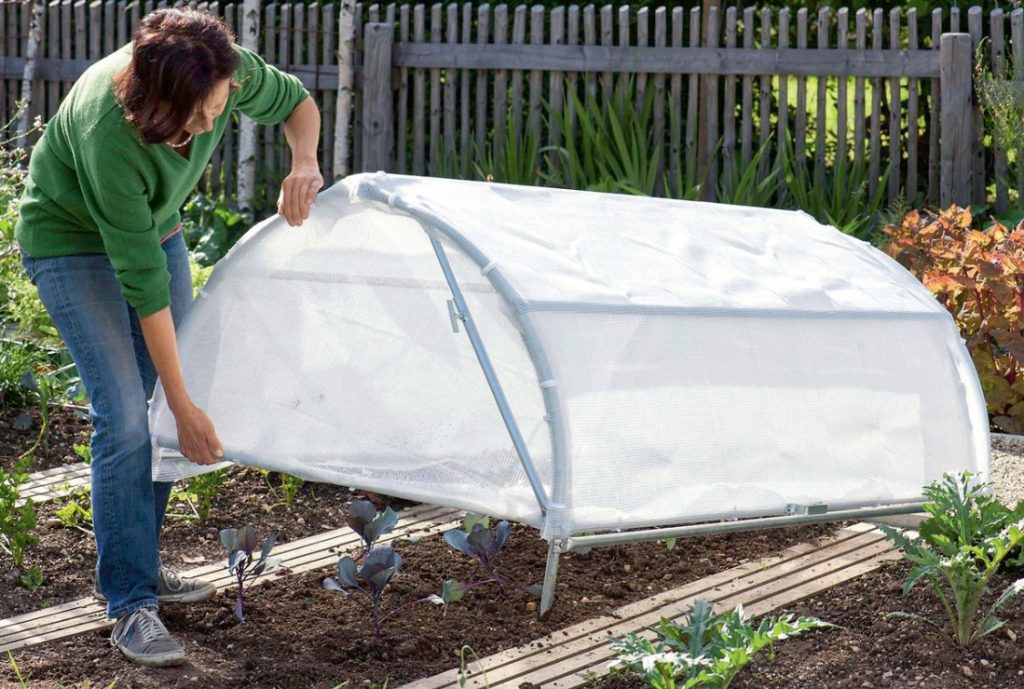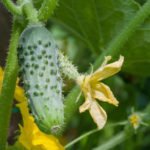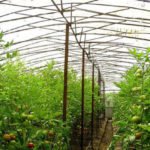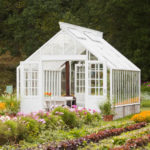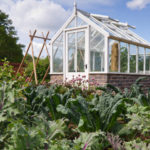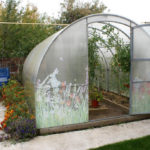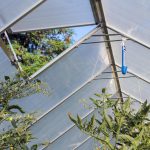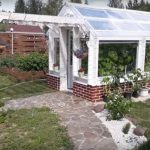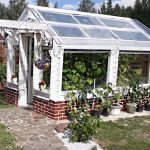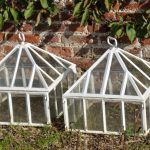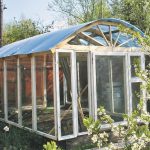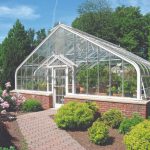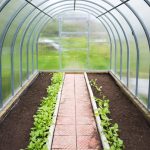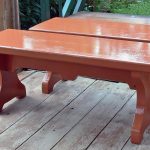Do you want to enjoy the taste of early vegetables-lettuce, radish, spinach, carrots and others? Easy! But vegetable plants in the beds need to be protected from the spring cold and pests. Let’s figure out what kind of protective material you will need for this.
Film, non-woven material and mesh must be in the Arsenal of any gardener. Knowing the advantages and disadvantages of each material allows you to build a clear algorithm for when and how to use it, for example, to get the crop early or to protect it from ubiquitous pests.
Film
For greenhouses, gardeners most often use film. Due to the fact that this material perfectly transmits light, but not cold, the soil and air under such a shelter warm up very quickly.
To make a greenhouse-tunnel easier – stick metal or plastic arcs in the ground at a distance of about 45 cm from each other and pull the film over them. This structure can be installed as soon as the snow comes off.
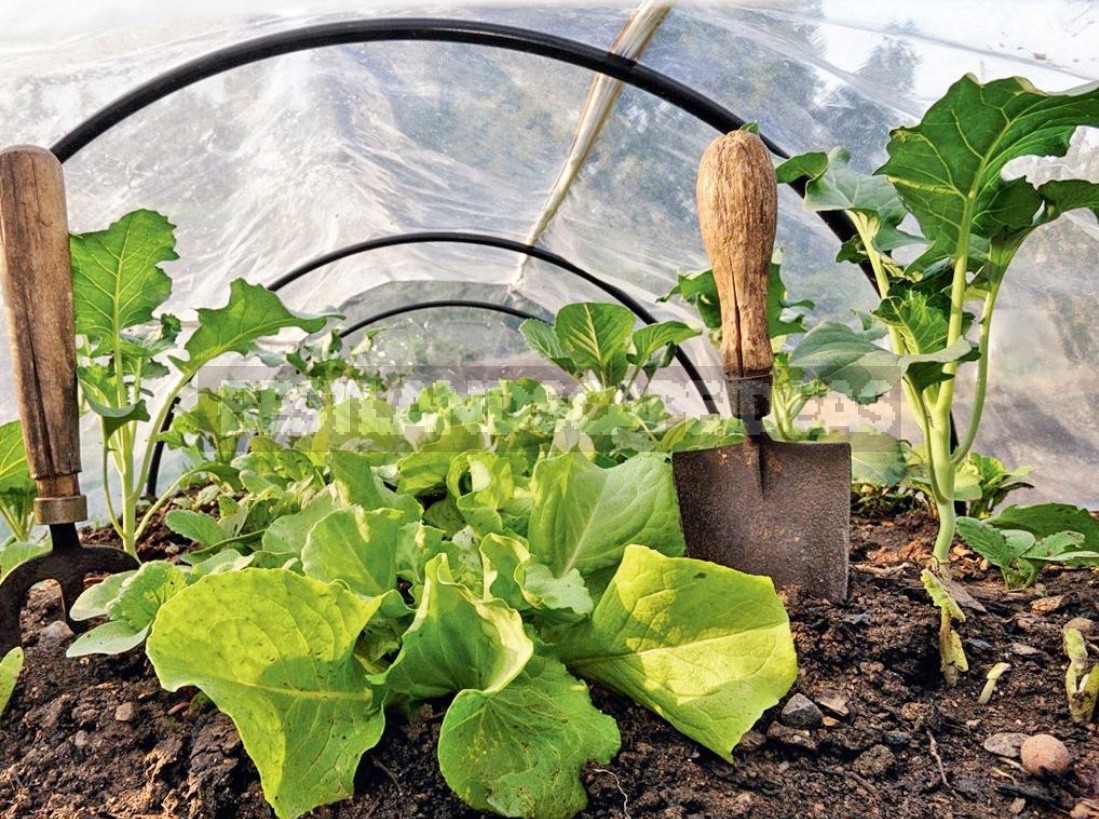
Today, the range of films for garden needs is huge. Alas, the usual just after a season or two begins to crumble. That is why the garden should immediately choose a reinforced version with fused synthetic mesh-the shelf life of such a structure is 3 years or more.
Another “long-playing” variety is a film with stabilizers in the composition, which do not allow it to break down under the influence of the sun. Special attention among such improved protectors should be paid to a film with a phosphor additive, thanks to which part of the sun’s rays from the ultraviolet spectrum are converted into red and infrared radiation. Plants under such a “blanket” grow more actively and bear fruit better.
However, the main drawback of any film remains unchanged — it “does not breathe”. The film should always be stretched on the frame and removed on Sunny warm days, otherwise the plants can simply be cooked due to overheating. In addition, due to sharp fluctuations in temperature during the day and at night, condensation forms on the inner walls of the “tent”, which is a fertile soil for the development of fungal diseases. So, when building a greenhouse, always provide for the possibility of good ventilation.
Non-woven material
Many gardeners have a question: is it possible to use non-woven material instead of film? Quite! The only “but”: to cover plants in the spring, you should choose a material with a density of 40 g/m² or more (thinner options are also suitable, only the cover will have to be made in 2-3 layers). This super-light material “breathes”, passes moisture and light, but does not stretch and easily breaks.
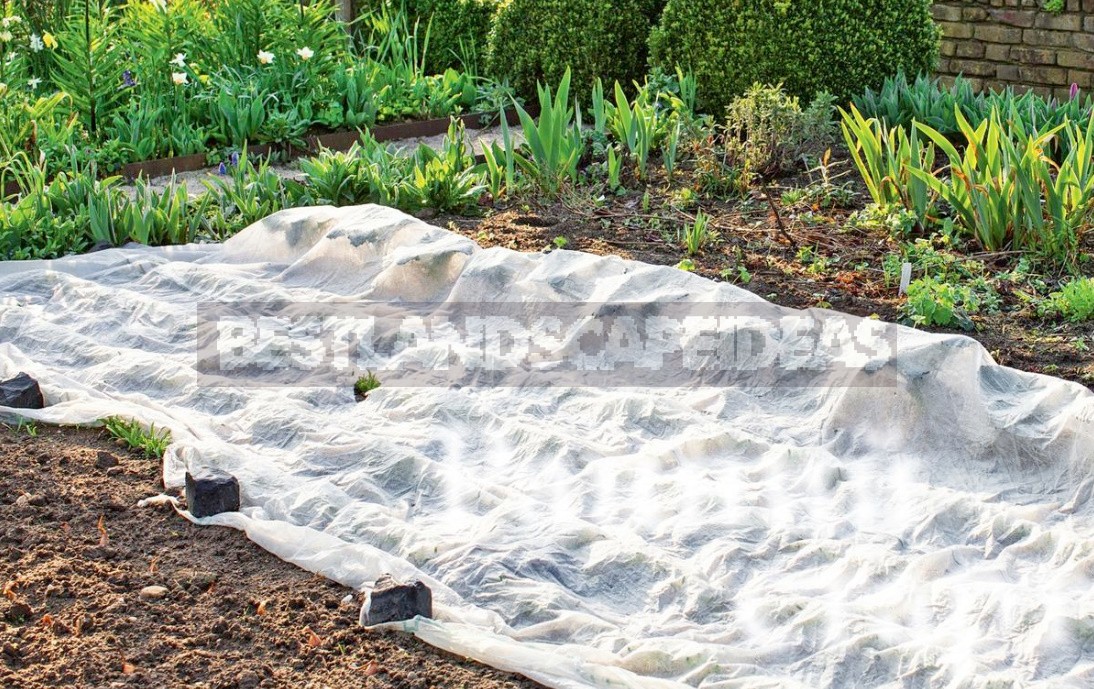
Another advantage of this system is that it can be thrown directly on the plants without pulling them over the frame. At the same time, it is also not necessary to stretch it on plants, because they need space for full development. Tip: for a 1.2 m wide bed, a cut of at least 2 m wide is required.
Grid
Garden nets are not designed to shelter plants from the cold, but they are quite capable of protecting green wards from pests. That is why they are indispensable in the garden in stable warm weather, when insect pests rush to the beds with passion.
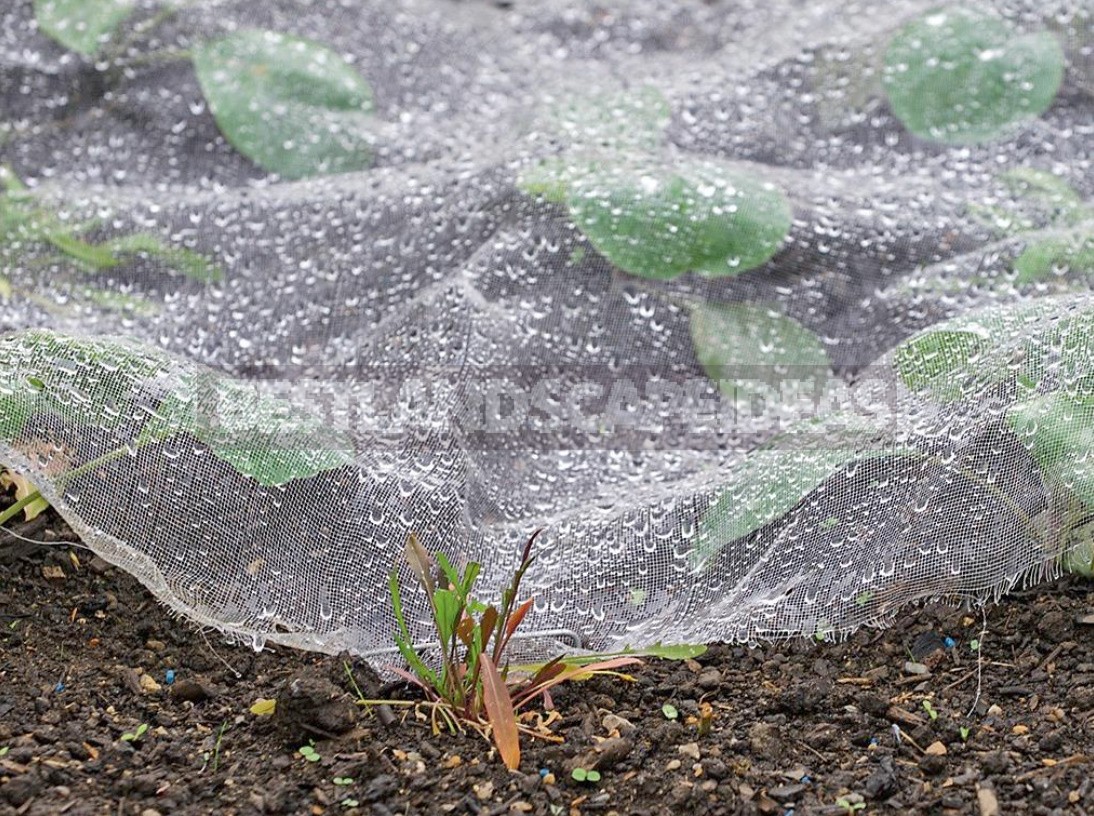
To protect the future crop from cabbage, carrot and onion flies, a mesh with cells of 1.4 mm is suitable. Well, so that even a tiny aphid does not get close to the garden “residents”, the size of the cells should not be more than 0.8 mm. And remember: without pollination of plants, the crop can not be obtained, so during their flowering, the grid should be removed.
